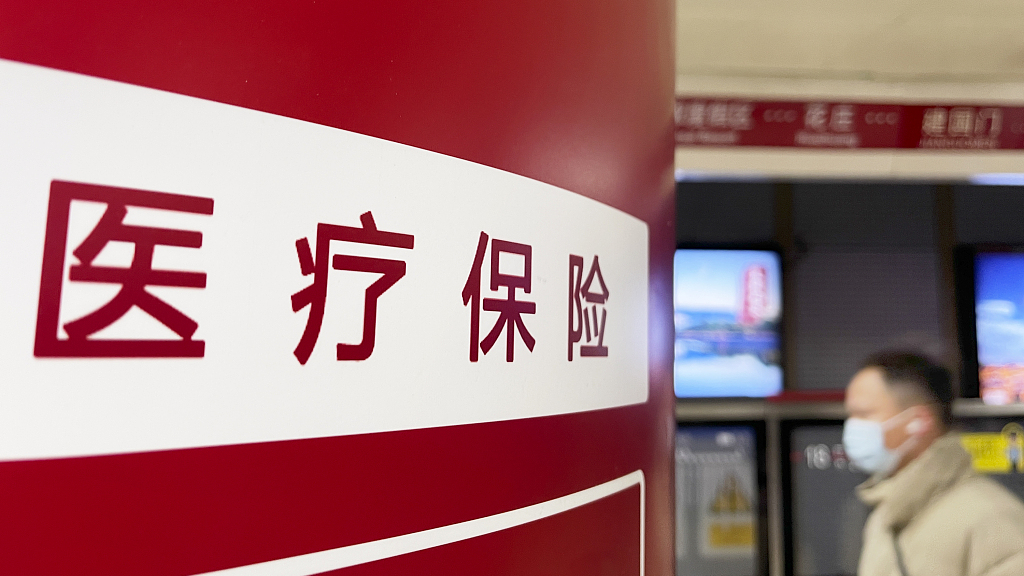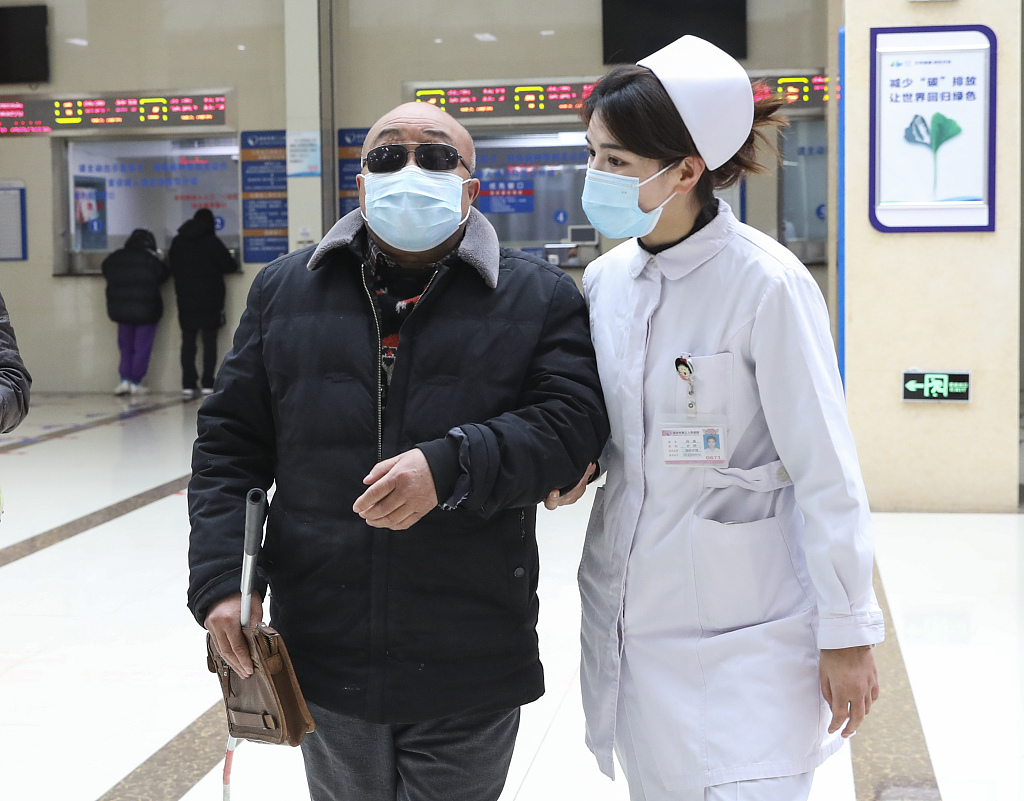
An advertisement about medical insurance on the platform of a subway station in Beijing, China, November 20. /VCG
Editor's note: Lu Jiahai is a professor in the Department of Epidemiology in the School of Public Health at Sun Yat-Sen University and the director of National Medical Products Administration Key Laboratory for Quality Monitoring and Evaluation of Vaccines and Biological Products. The article reflects the author's opinions and not necessarily those of CGTN.
People's health is not only a crucial indicator of national strength, but also a shared aspiration of all in a country. To achieve this objective, China established the insurance system for urban employees in 1998. It consists of two parts: mandatory personal accounts with contributions from both employees and their employers that mainly pay for ordinary outpatient services and prescribed medicines for minor illnesses; and a pooled fund contributed by employers that is used to reimburse hospitalization bills and outpatient bills for serious diseases.
However, with China's rapid entry into an aging society and the increase in the incidence of chronic diseases, the system's limitations have become increasingly apparent. The main challenges include insufficient help for those truly in need, a lack of mutual aid, and unclear effects in easing the burden on patients.
In 2021, China's State Council issued the "Guiding Opinions on Establishing and Improving the Outpatient Mutual Aid Guarantee Mechanism for Basic Medical Insurance of Employees," which adjusted the structure of employer-made contributions allocated to the pooled fund and personal accounts, with the enlarged part of the pooled fund mainly used for outpatient mutual aid by raising the reimbursement percentage for outpatient medical bills.
After this reform, employees can still keep and deposit personal contributions into their personal accounts which will retain parts of original functions. On the other hand, the pooled fund, now with 100 percent employer-paid funds, can provide more reimbursement by including general outpatient expenses. This reform helps those in need of medical treatment, addresses the shortcomings of the previous system, and significantly reduces the financial burden for patients. It is also a manifestation of the redistribution function of social security, which is conducive to promoting common prosperity and people's health.
The coverage of outpatient medical services by the pooled fund is achieved through internal fund structure adjustment. Such change can provide tangible benefits to the outpatient service users without additional fundraising or increased contributions from employers and employees. With outpatient medical services covered with the pooled fund, a new social security mechanism has been established to bring additional help for the insured. The funds needed for this come from the percentage of employer's contributions which used to go to employees' personal accounts and from the redistribution of the original pooled funds.
Through this reform, the new reimbursement mechanism for outpatient services will cover all insured people under the insurance system for urban employees. The medical insurance department will include general outpatient expenses for common illnesses in the reimbursement scope of the pooled fund, while continuing to use the pooled fund to pay for outpatient treatment of chronic diseases such as hypertension and diabetes and special diseases that cause heavy burdens on the public.

A nurse helps a patient to see his doctor in Huai'an City, Jiangsu Province, China, February 12, 2023. /VCG
After this reform, the mutual aid function of China's medical insurance system has significantly improved, benefiting insured employees needing outpatient services and those with multiple illnesses. Previously, the outpatient expenses for common and frequently occurring diseases were not reimbursed by the pooled fund, but now they are included, reducing the burden from outpatient expenses on patients. In particular, for insured employees with multiple illnesses and chronic diseases, the reimbursement they can get from the pooled fund far exceeds the reduced deposits in their personal accounts.
By foregoing a few hundred yuan in their personal account, they can get reimbursed for thousands of yuan from the pooled fund. In 2022, the new mechanism was tried on 1.18 billion outpatient visits, with reimbursement percentage for outpatient medical bills at about 50 percent for the insured. Although the reform means a reduction of new deposits made to the personal accounts of most insured persons, the increased reimbursement percentage for outpatient medical bills can truly benefit the elderly, enabling them to receive better medical care.
Nationwide, this reform has set clear standards for the scope of medicine, diagnosis, treatment and consumables eligible for reimbursement at outpatient services. The range of designated outpatient service providers has been expanded. Cities are allowed to extend the range of qualified outpatient service providers that employees can choose from primary care facilities to medical institutions of all levels. While continuing to maintain no deductible for outpatient services, the reform has increased the reimbursement ratio and the annual maximum fund payment limit for both employees and retirees. Some cities have also increased the reimbursement percentage for specific outpatient conditions.
The beneficiaries of personal accounts can be expanded from the insured employees to include their spouse, parents and children. This allows for a larger scope of coverage.
After the reform, personal accounts can also be used to pay for out-of-pocket expenses at designated medical institutions, as well as out-of-pocket expenses for medicine, medical equipment, and consumables purchased at retail pharmacies. Personal accounts of urban employees can also be used to pay for the personal contributions of their spouses, parents and children who participate in the urban and rural resident basic medical insurance program, thereby increasing the efficiency of the use of medical insurance funds and broadening the scope of coverage.
China has always regarded improving people's health as an important goal, and implemented a series of reform measures to promote the rapid development of health and medical care services. This reform aims to improve the medical insurance benefits for the insured by redefining the use of medical insurance funds, without increasing the financial burden on individuals or enterprises. By maximizing the efficiency of medical insurance funds, this reform strives to achieve the goal of having a healthy population and promoting social equity.









